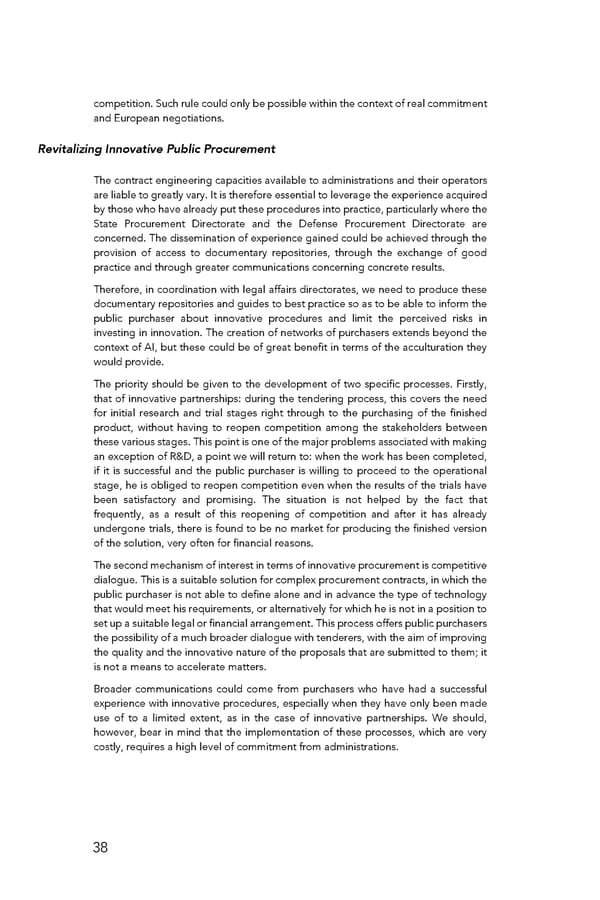competition. Such rule could only be possible within the context of real commitment and European negotiations. Revitalizing Innovative Public Procurement The contract engineering capacities available to administrations and their operators are liable to greatly vary. It is therefore essential to leverage the experience acquired by those who have already put these procedures into practice, particularly where the State Procurement Directorate and the Defense Procurement Directorate are concerned. The dissemination of experience gained could be achieved through the provision of access to documentary repositories, through the exchange of good practice and through greater communications concerning concrete results. Therefore, in coordination with legal affairs directorates, we need to produce these documentary repositories and guides to best practice so as to be able to inform the public purchaser about innovative procedures and limit the perceived risks in investing in innovation. The creation of networks of purchasers extends beyond the context of AI, but these could be of great benefit in terms of the acculturation they would provide. The priority should be given to the development of two specific processes. Firstly, that of innovative partnerships: during the tendering process, this covers the need for initial research and trial stages right through to the purchasing of the finished product, without having to reopen competition among the stakeholders between these various stages. This point is one of the major problems associated with making an exception of R&D, a point we will return to: when the work has been completed, if it is successful and the public purchaser is willing to proceed to the operational stage, he is obliged to reopen competition even when the results of the trials have been satisfactory and promising. The situation is not helped by the fact that frequently, as a result of this reopening of competition and after it has already undergone trials, there is found to be no market for producing the finished version of the solution, very often for financial reasons. The second mechanism of interest in terms of innovative procurement is competitive dialogue. This is a suitable solution for complex procurement contracts, in which the public purchaser is not able to define alone and in advance the type of technology that would meet his requirements, or alternatively for which he is not in a position to set up a suitable legal or financial arrangement. This process offers public purchasers the possibility of a much broader dialogue with tenderers, with the aim of improving the quality and the innovative nature of the proposals that are submitted to them; it is not a means to accelerate matters. Broader communications could come from purchasers who have had a successful experience with innovative procedures, especially when they have only been made use of to a limited extent, as in the case of innovative partnerships. We should, however, bear in mind that the implementation of these processes, which are very costly, requires a high level of commitment from administrations. 38
 For a Meaningful AI - Report Page 38 Page 40
For a Meaningful AI - Report Page 38 Page 40